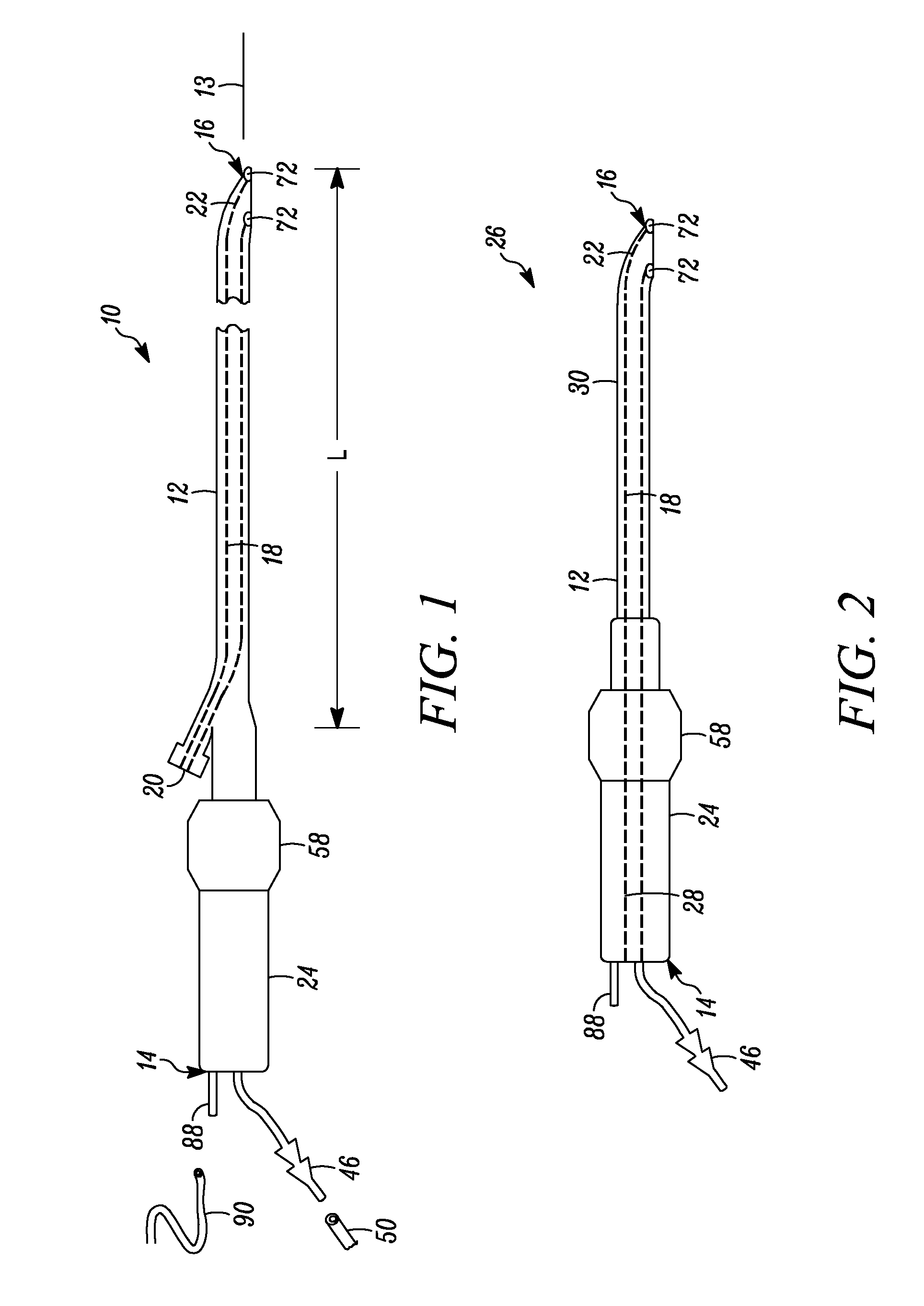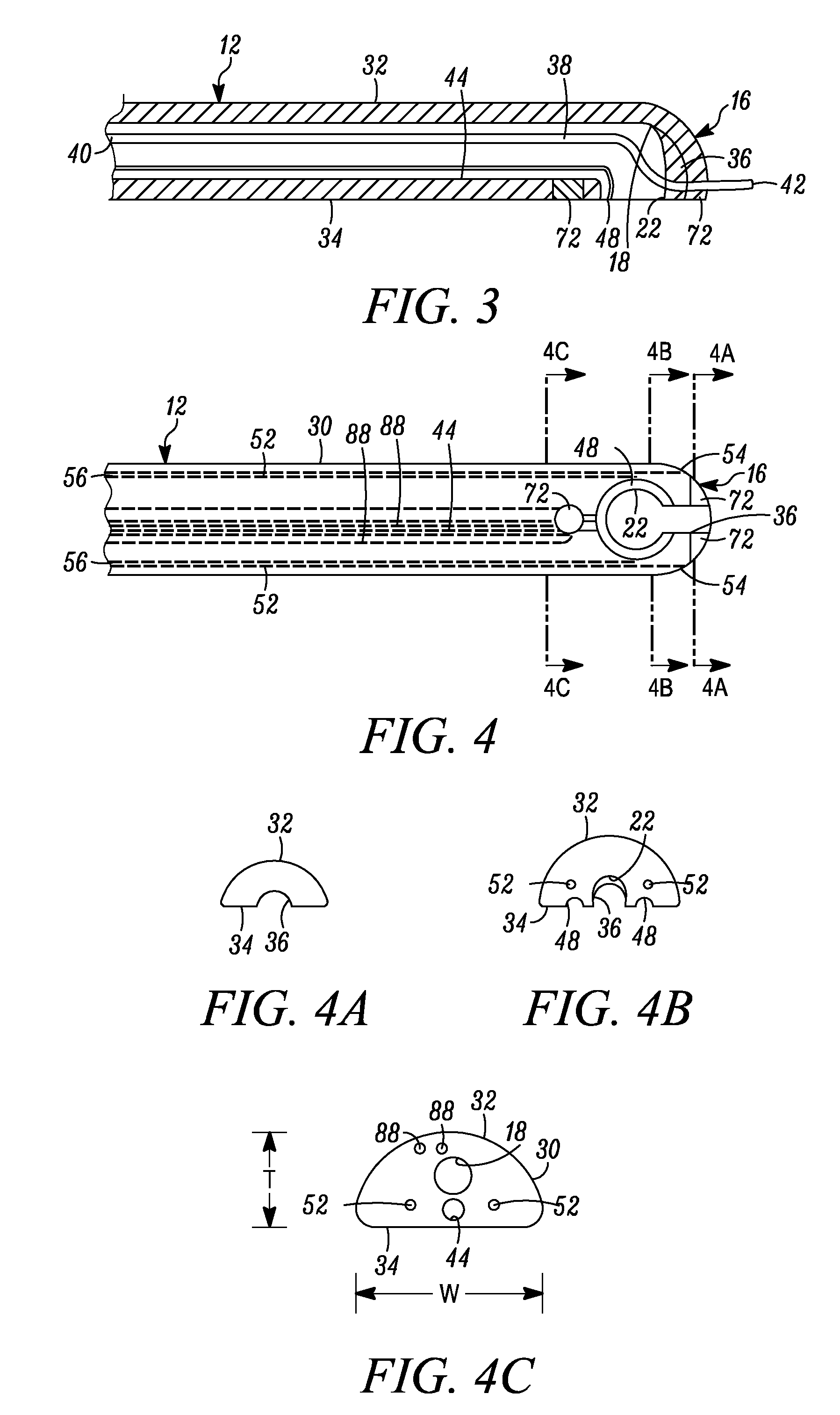Methods and apparatus for lead placement on a surface of the heart
a technology of lead placement and surface, which is applied in the direction of internal electrodes, transvascular endocardial electrodes, therapy, etc., can solve the problems of increased risk of complications during and after surgery, large working volume in the pericardial space, and chest tubes
- Summary
- Abstract
- Description
- Claims
- Application Information
AI Technical Summary
Benefits of technology
Problems solved by technology
Method used
Image
Examples
Embodiment Construction
[0104]The present invention provides methods and apparatus for placing a lead on a surface of a human heart. Although the invention will be described by way of example but not limitation in relation to epicardial lead placement, placement of the lead on other heart surfaces is also possible. Such heart surfaces may also include the pericardium and the endocardial surface in addition to the epicardial surface. The manner in which the lead is placed on the heart surface may also vary. By way of example but not limitation, the lead may be implanted or embedded into the surface using a retention member or fastener which penetrates beneath the surface. Different types of retention members may be utilized and it is not intended for the present invention to be limited only to those retention members shown in the drawings since it is realized that many variations may be used to effectuate lead retention without departing from the present invention. Moreover, the lead may be placed on the he...
PUM
 Login to View More
Login to View More Abstract
Description
Claims
Application Information
 Login to View More
Login to View More - R&D
- Intellectual Property
- Life Sciences
- Materials
- Tech Scout
- Unparalleled Data Quality
- Higher Quality Content
- 60% Fewer Hallucinations
Browse by: Latest US Patents, China's latest patents, Technical Efficacy Thesaurus, Application Domain, Technology Topic, Popular Technical Reports.
© 2025 PatSnap. All rights reserved.Legal|Privacy policy|Modern Slavery Act Transparency Statement|Sitemap|About US| Contact US: help@patsnap.com



